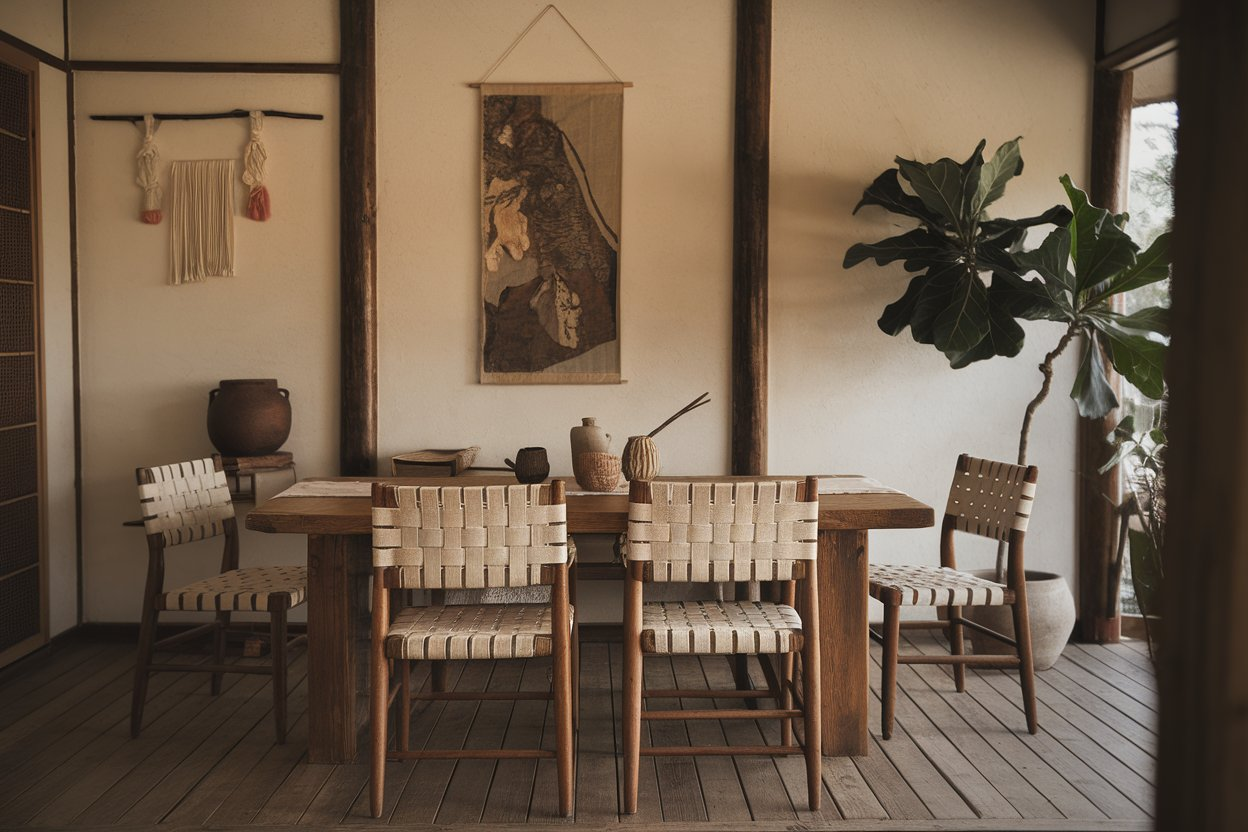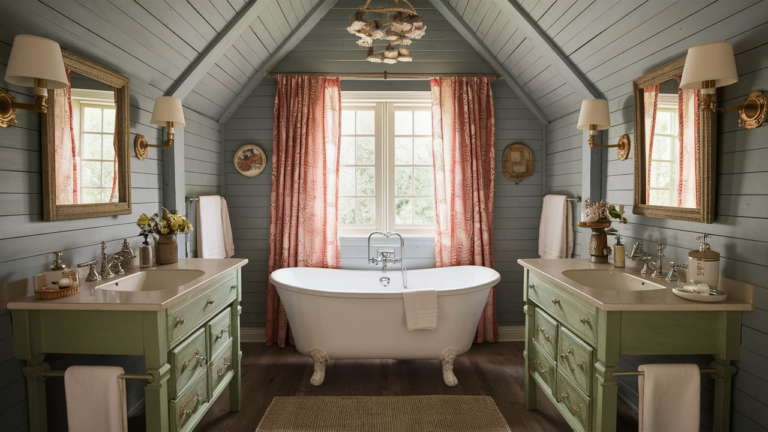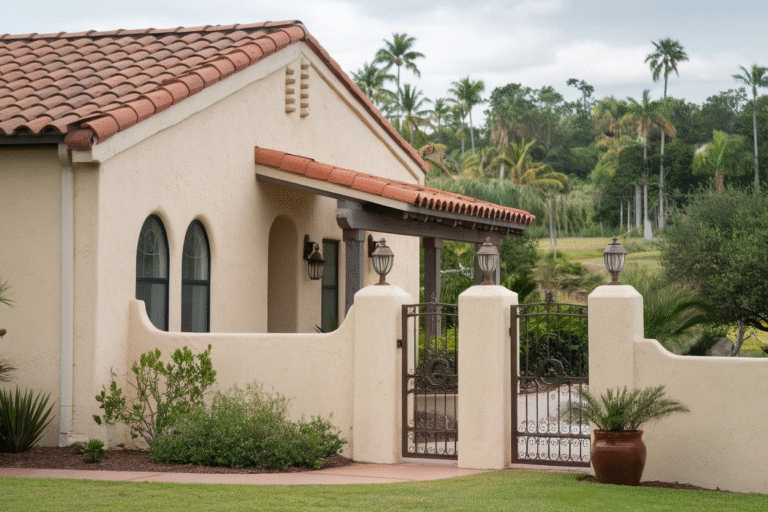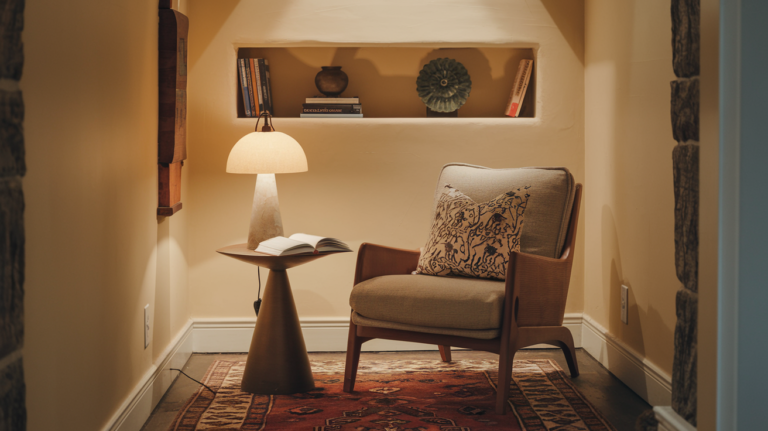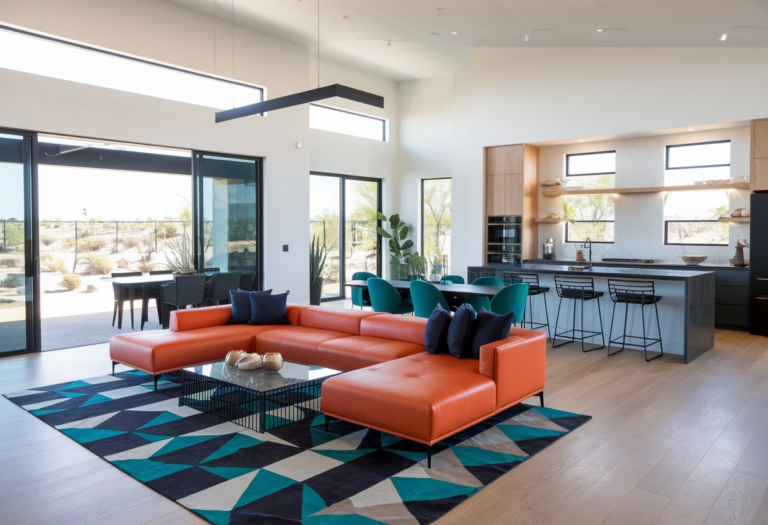26 Wabi Sabi Interior Ideas
There’s a quiet kind of magic in imperfection. In a world that praises polished perfection and glossy Instagram filters, the ancient Japanese philosophy of Wabi Sabi whispers something entirely different—“beauty lies in the naturally imperfect.”
And if you’ve ever caught yourself admiring the way sunlight falls across a worn wooden floor or how an old ceramic mug holds stories in its cracks, you already get it. You’re halfway to a Wabi Sabi interior and didn’t even know it.
1. Embrace Imperfect Walls
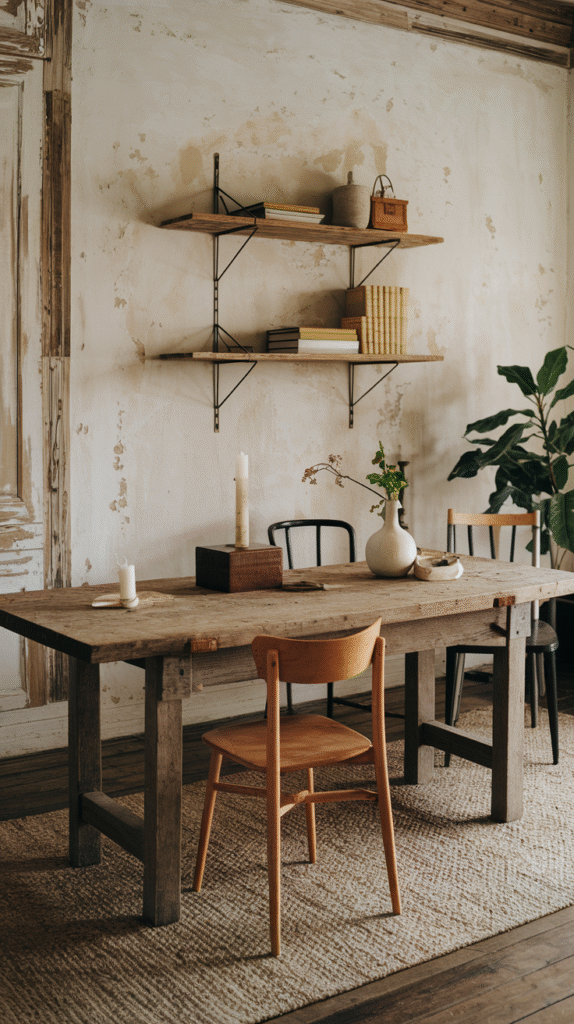
Forget crisp, machine-finished paint jobs. Wabi Sabi welcomes plaster walls with uneven textures, raw finishes, and even fading hues. The rougher edges tell stories—the hand behind the brushstroke, the years weathered.
2. Use Natural Materials
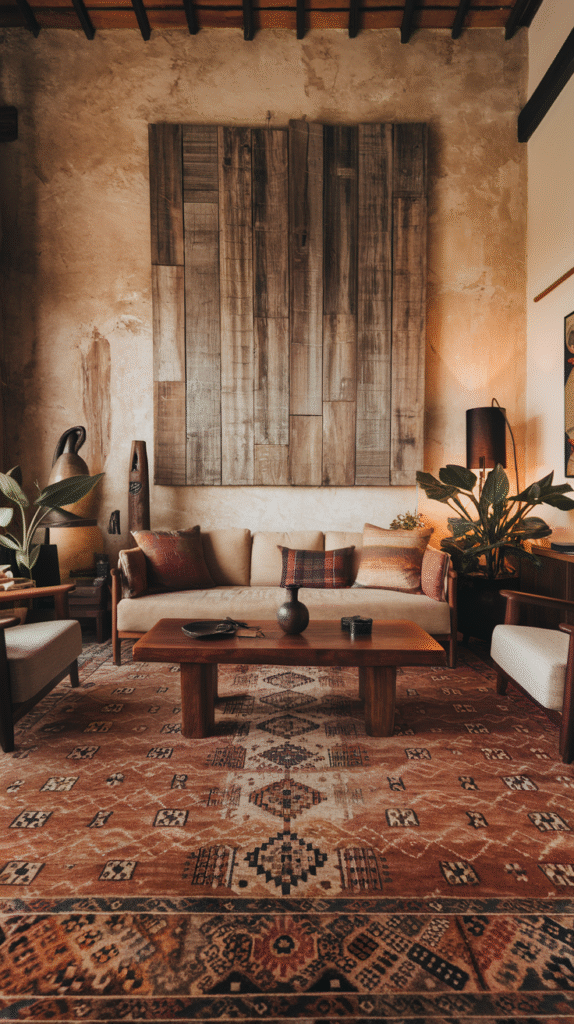
You want wood, stone, linen, clay, jute—materials that change over time, develop patinas, and age gracefully. A leather chair that gets scuffed becomes richer, not ruined. The idea is to decorate with the passage of time in mind.
3. Let Light Be Wild
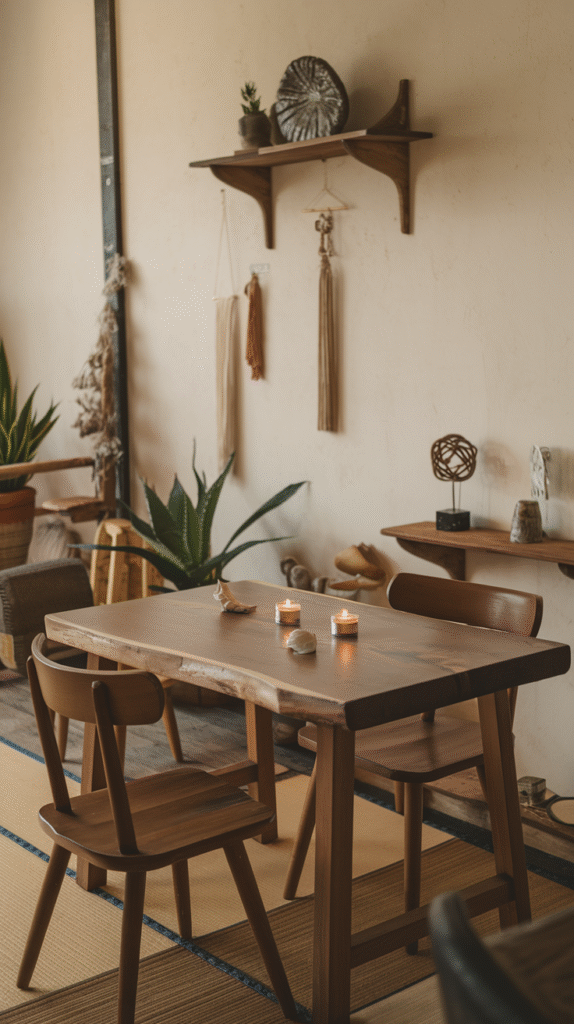
Skip harsh overhead lighting. Let daylight stream through in its own rhythm. Use sheer curtains, paper lamps, and flickering candles. Wabi Sabi lighting should feel like the room is breathing with the sun.
4. Highlight Wear and Tear
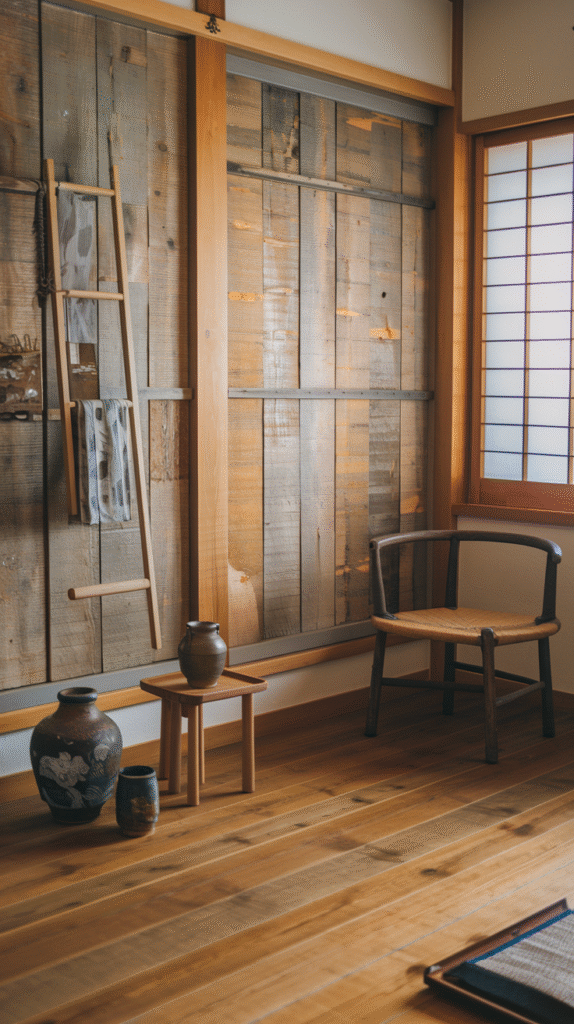
That wooden table with scratches from family dinners? That’s character, not clutter. Don’t cover it up. Let it sing. Wear and tear is a Wabi Sabi badge of honor—a visible archive of life lived.
5. Choose Earth Tones

From stormy greys to mossy greens and warm browns, Wabi Sabi colors reflect the natural world. Imagine the palette of a forest at dusk. Muted, dusty, desaturated colors help create a calm, grounded space.
6. Go Minimal, but Not Empty
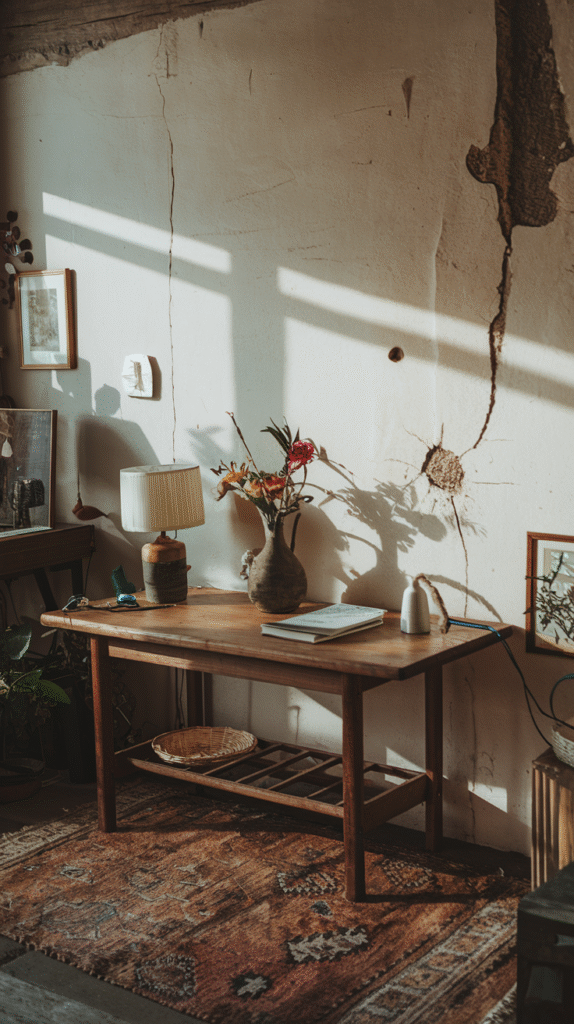
It’s not about having less just for the sake of it. It’s about only keeping what adds meaning. Your great-grandmother’s teapot might stay, but the trendy plastic knick-knack from a big box store? Not so much.
7. Handmade over Mass-Produced
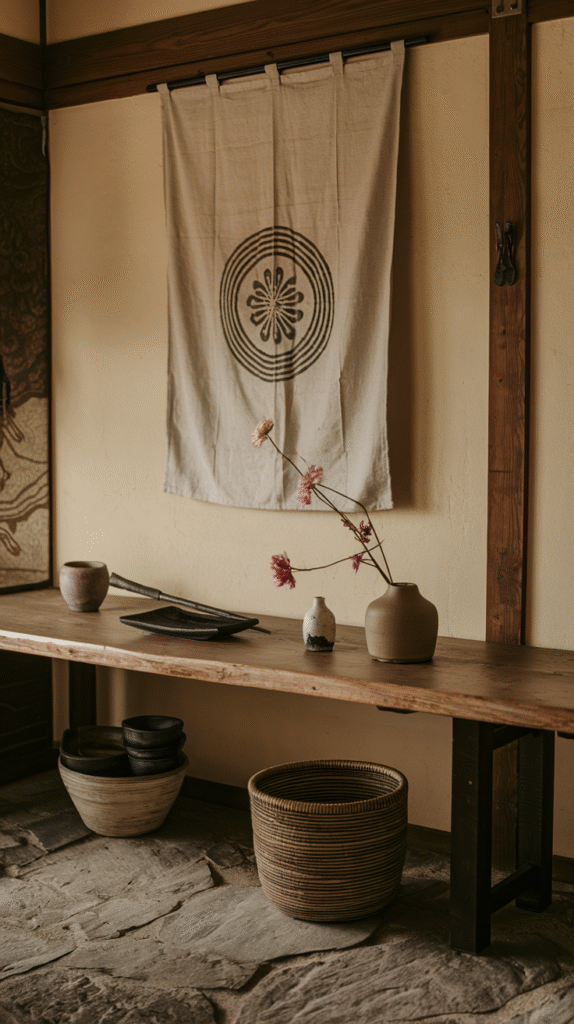
There’s real energy in a hand-thrown ceramic bowl. The thumbprint in the glaze, the slight wobble in shape—these small details carry the soul of the maker. Swap factory-made decor for artisanal pieces when you can.
8. Curate, Don’t Decorate

Think of your home as a gallery for your soul. Curate meaningful objects rather than just decorating for style. Each object should have a reason to be there, a story to whisper when the room falls quiet.
9. Leave Some Negative Space
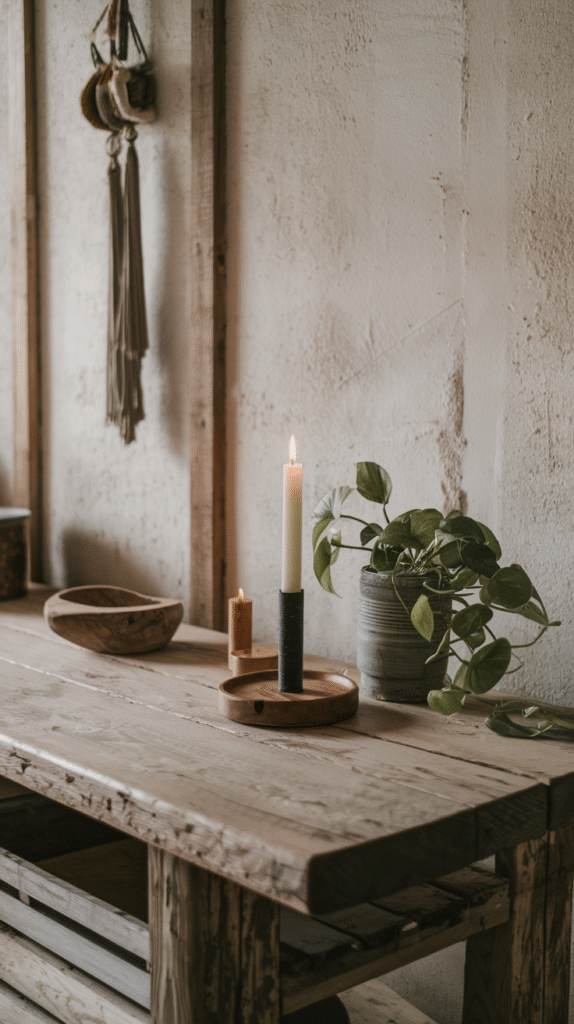
Let your rooms breathe. You don’t need every surface covered. Empty space holds weight in Wabi Sabi, like a pause in a conversation—it allows the beauty of what is present to resonate more deeply.
10. Honor the Old
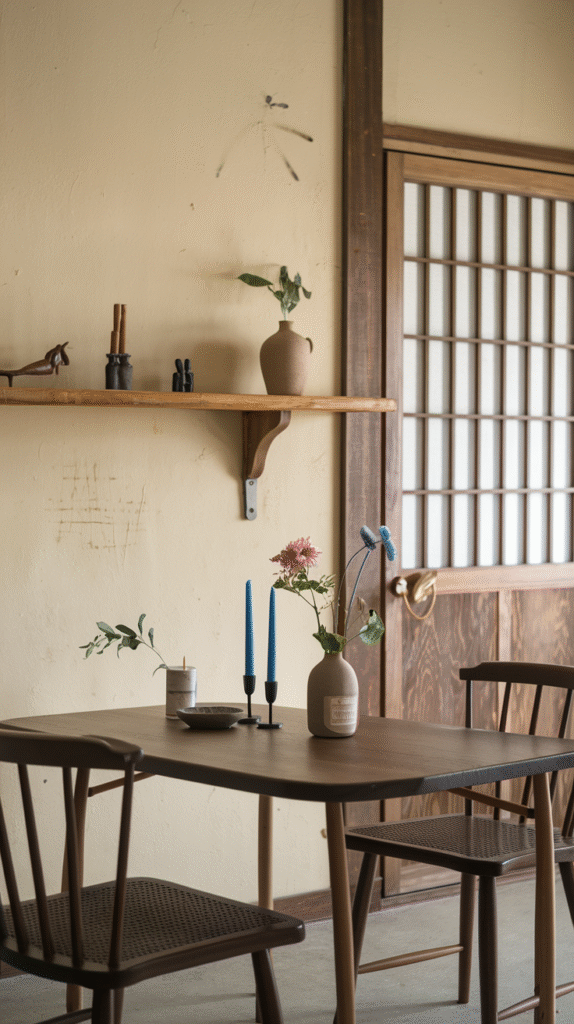
Display that cracked vase. Keep the patched-up quilt. Vintage and antique items often hold more emotional value than newer ones. They carry the poetry of time and the weight of memory.
11. Let Function Lead
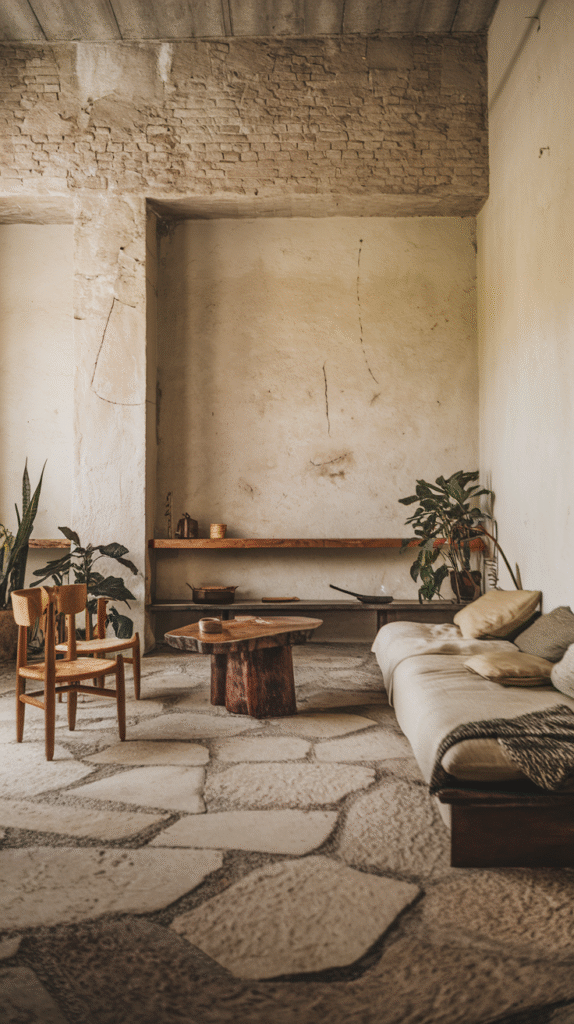
Don’t sacrifice function for form. Wabi Sabi interiors prioritize useful beauty. A bench should be comfortable before it’s stylish. A bowl should feel right in your hands, even if it isn’t symmetrical.
12. Introduce Patina
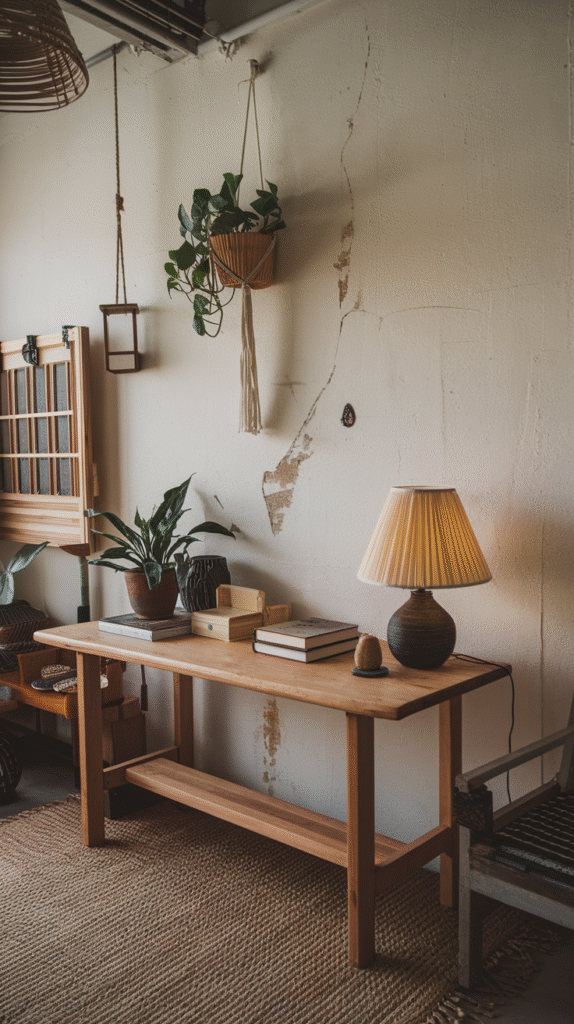
Polished brass and pristine marble? Lovely in some styles, but in Wabi Sabi, we prefer the green of oxidized copper or the soft dings in well-loved metals. Aged finishes reflect time’s hand.
13. Bring the Outside In

Add life to your space with natural elements—a dried branch, a stone collection, a twisted piece of driftwood. These little things remind us we’re part of a bigger, more ancient story.
14. Layer Textures Softly
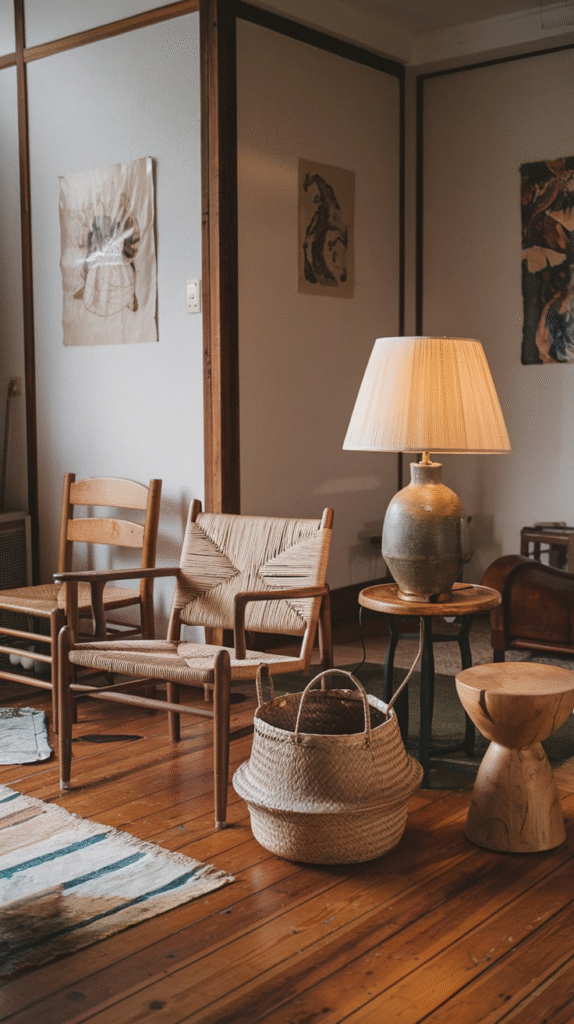
Linen, wool, raw silk, cotton—we’re talking about comfort you can feel in your bones. Layer soft textiles in earthy tones to add subtle richness without overwhelming the senses.
15. Let Silence Decorate
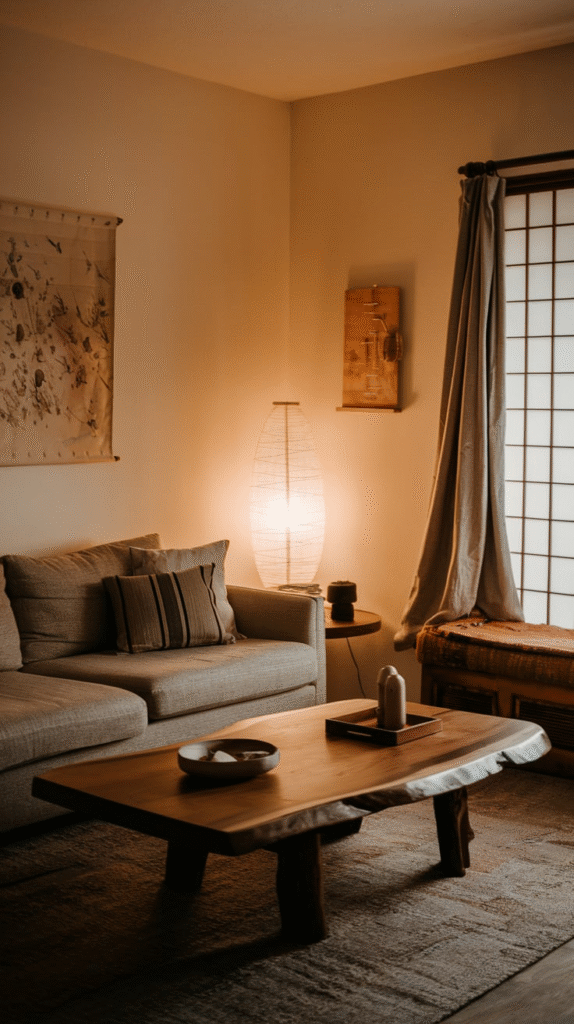
In Wabi Sabi, silence is a design choice. Don’t drown your space in TVs or devices. Let a room be quiet enough to hear the wind through the trees or the sound of your own breath.
16. Reclaim Forgotten Corners
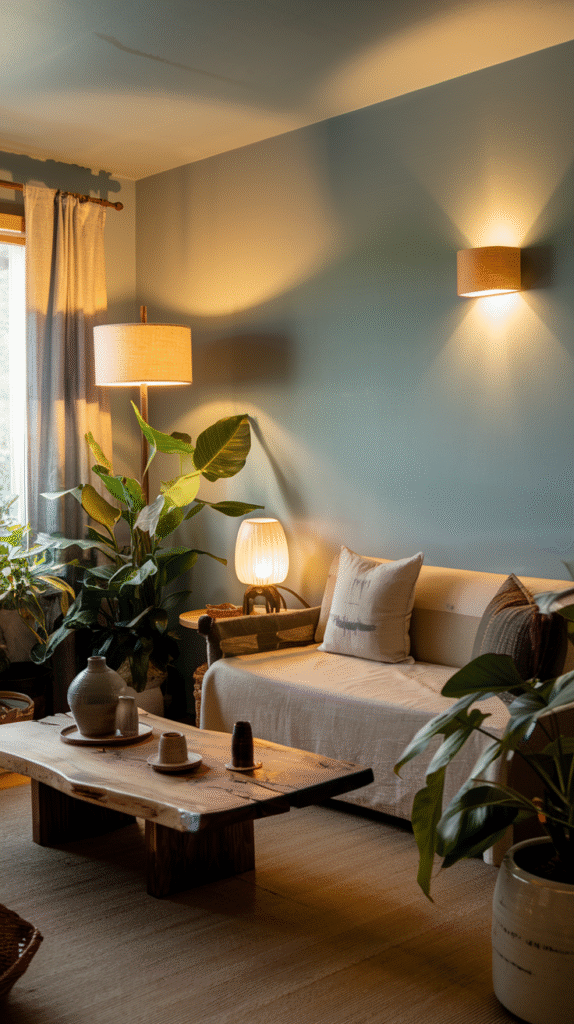
That weird corner behind your sofa? Make it a reading nook. The dusty windowsill? Add a candle and a single flower in a cracked vase. Wabi Sabi finds beauty in forgotten places.
17. Create a Sense of Ritual
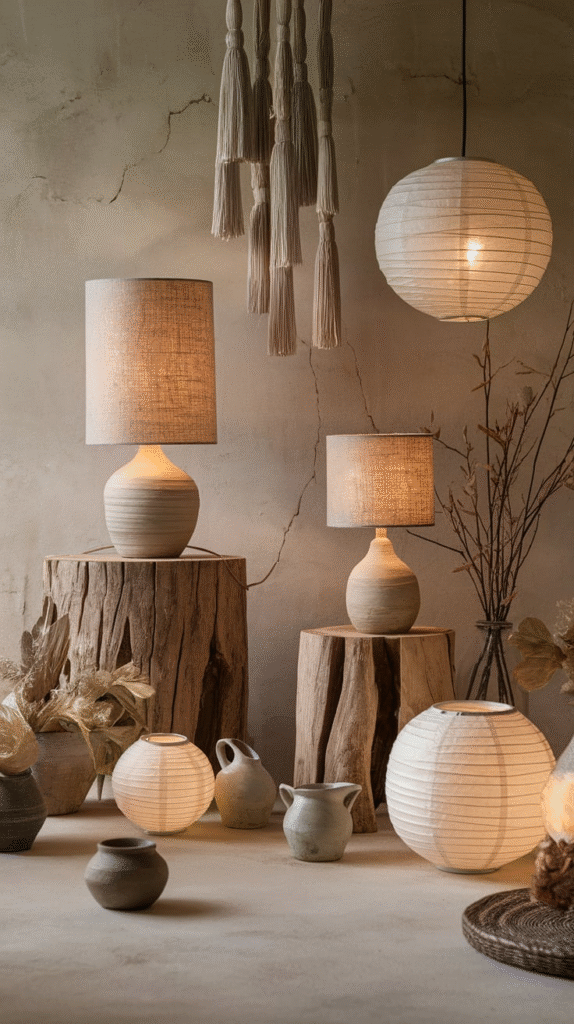
Turn daily routines into ceremonies. Drink tea from a cup that fits your hand like a handshake. Light a candle at dusk. Decorate your home to support quiet, personal rituals that ground your spirit.
18. Make Peace with Clutter
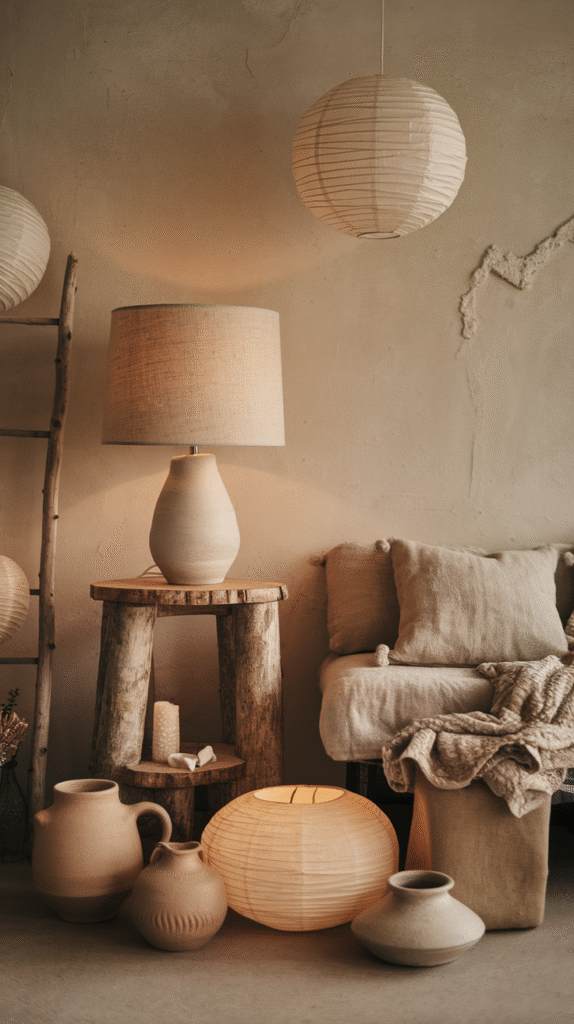
Not all clutter is chaos. Wabi Sabi isn’t sterile. It’s okay if a blanket is left folded on a chair or books are piled on the floor. It’s about real living, not magazine spreads.
19. Emphasize Craftsmanship
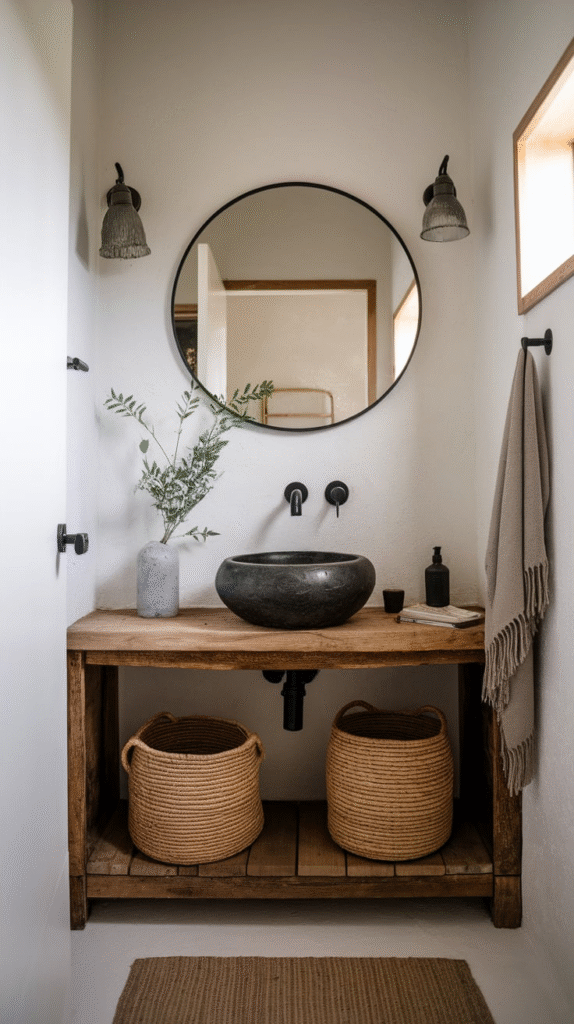
Hand-stitched quilts. Jointed woodwork. Pottery with fingerprints in the glaze. When something is well-made by human hands, its soul lingers. Prioritize items that took time to create.
20. Use Simple Shapes
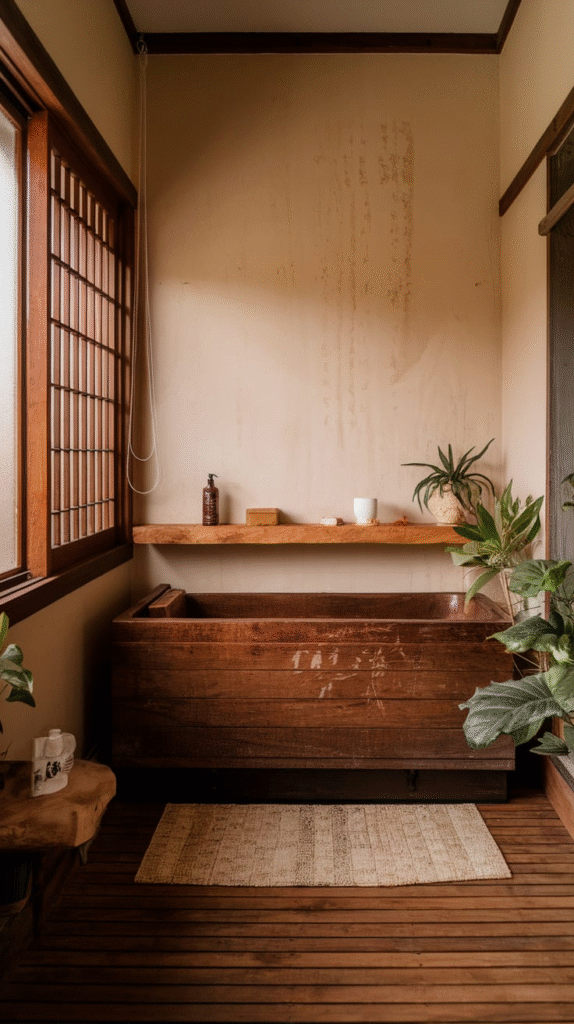
Stay away from overly ornate designs. Clean lines and primitive forms bring calmness. Think simple, rounded, and raw—like the shape of a stone smoothed by a river.
21. Celebrate Seasonality
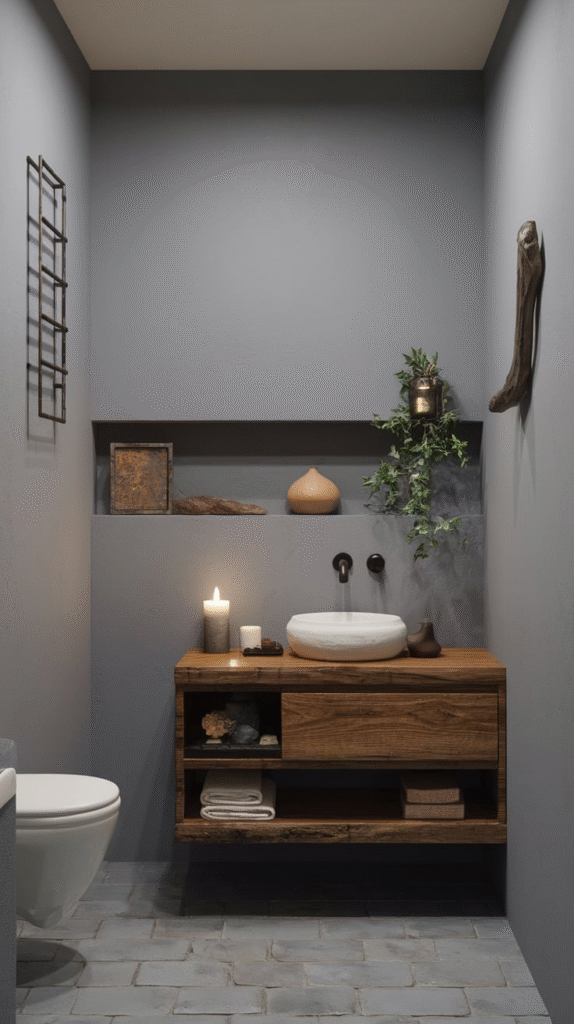
Decorate with the seasons in mind. Change up your space slowly over time with what the earth offers—autumn leaves, spring branches, winter pine, summer grasses. Let your home evolve like a garden.
22. Edit Ruthlessly
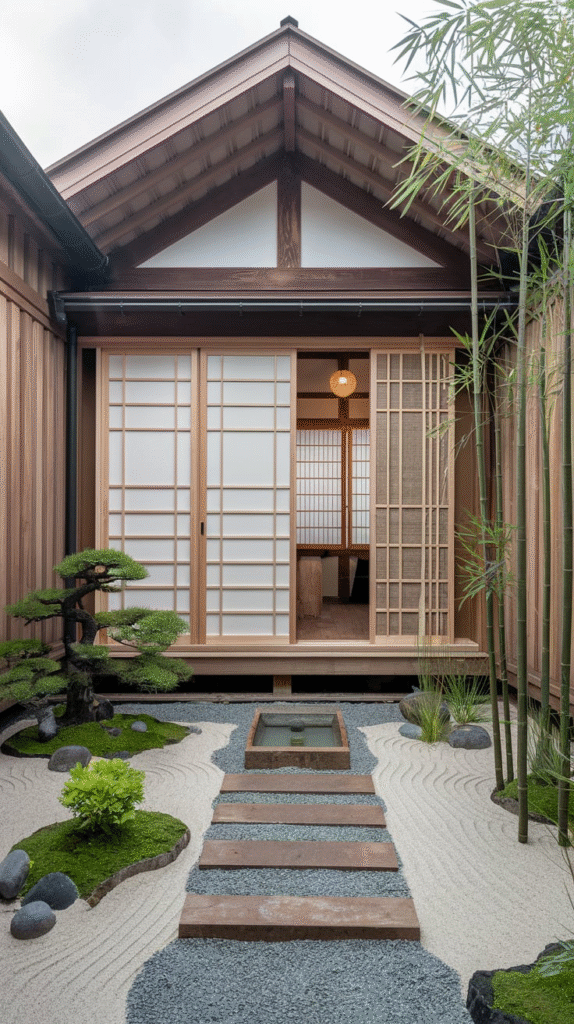
Just because you love something doesn’t mean it belongs in your space forever. Wabi Sabi is also about letting go. Gift or donate things that no longer serve your spirit.
23. Use Scent Sparingly
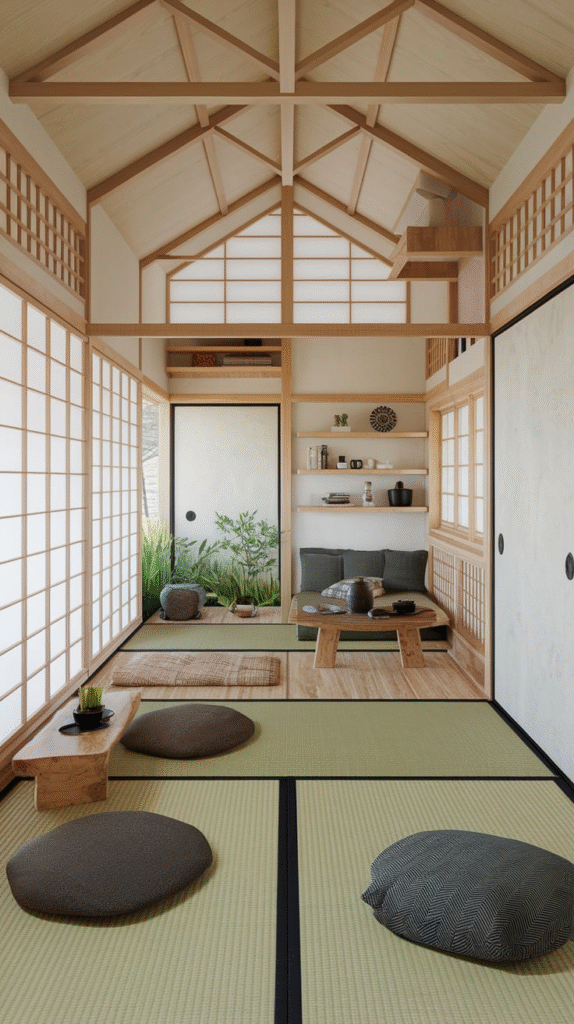
A subtle incense. A whiff of cedar. A faint floral soap. Fragrance should never shout—it should beckon like a breeze through a garden, not smack you in the face.
24. Honor Shadows
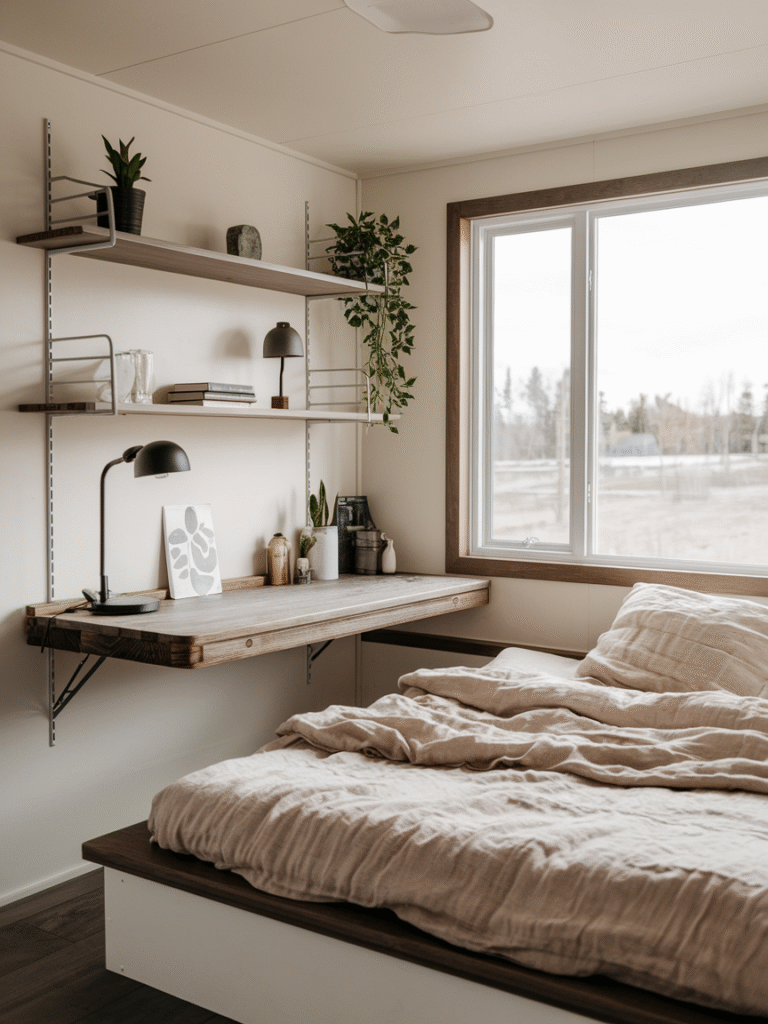
Wabi Sabi isn’t afraid of the dark. Embrace shadows and moody corners—don’t over-light your space. The interplay of light and dark adds depth and mystery.
25. Let the Unfinished Be
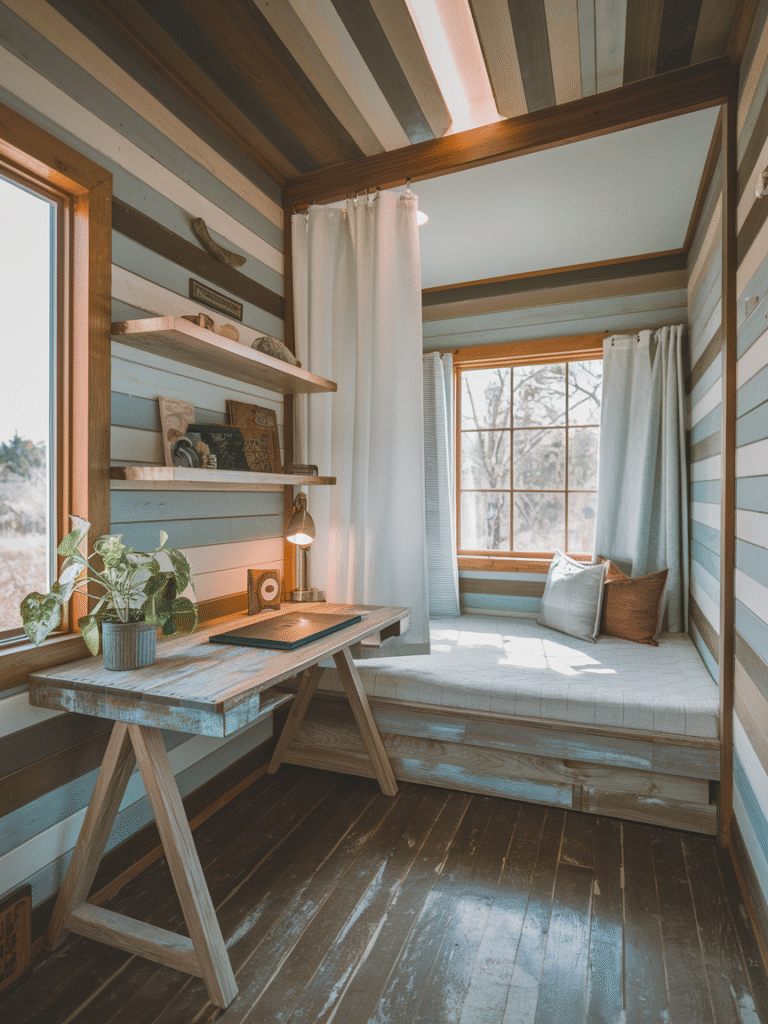
Leave that edge raw. Don’t hide that crack. Wabi Sabi lets things be incomplete, in process, forever becoming. Beauty lies in a state of becoming, not completion.
26. Reflect Yourself
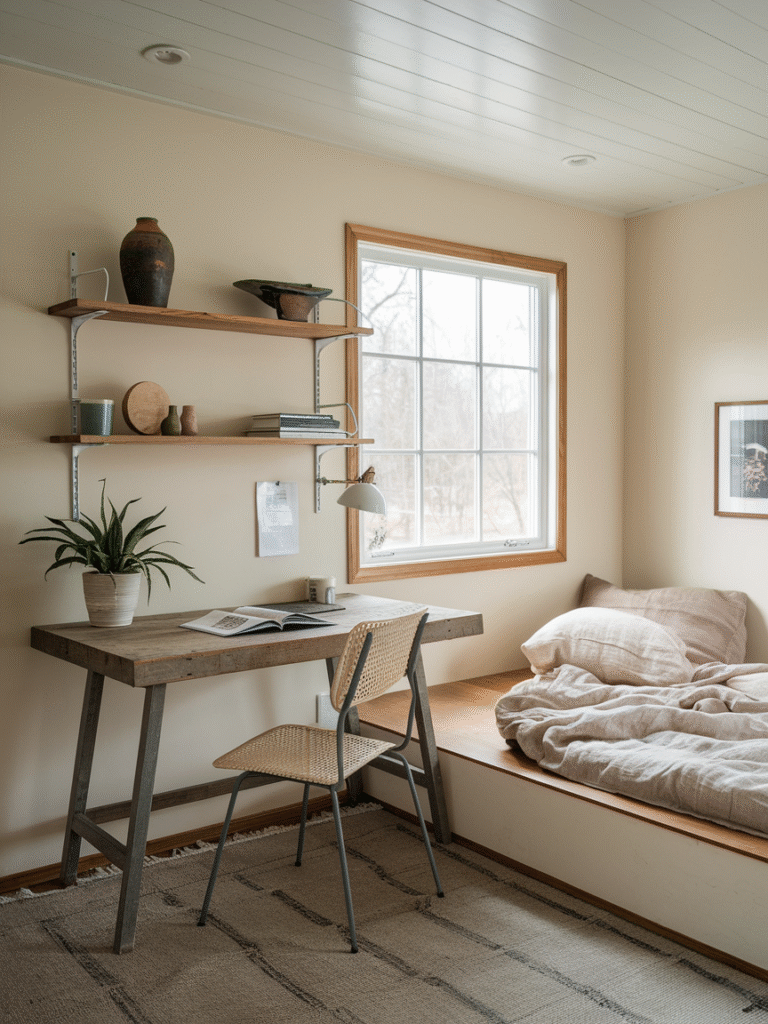
At the end of the day, Wabi Sabi isn’t a look—it’s a feeling. Your home should reflect your story, your struggles, your softness. Let it be a mirror, not a mask.
Conclusion
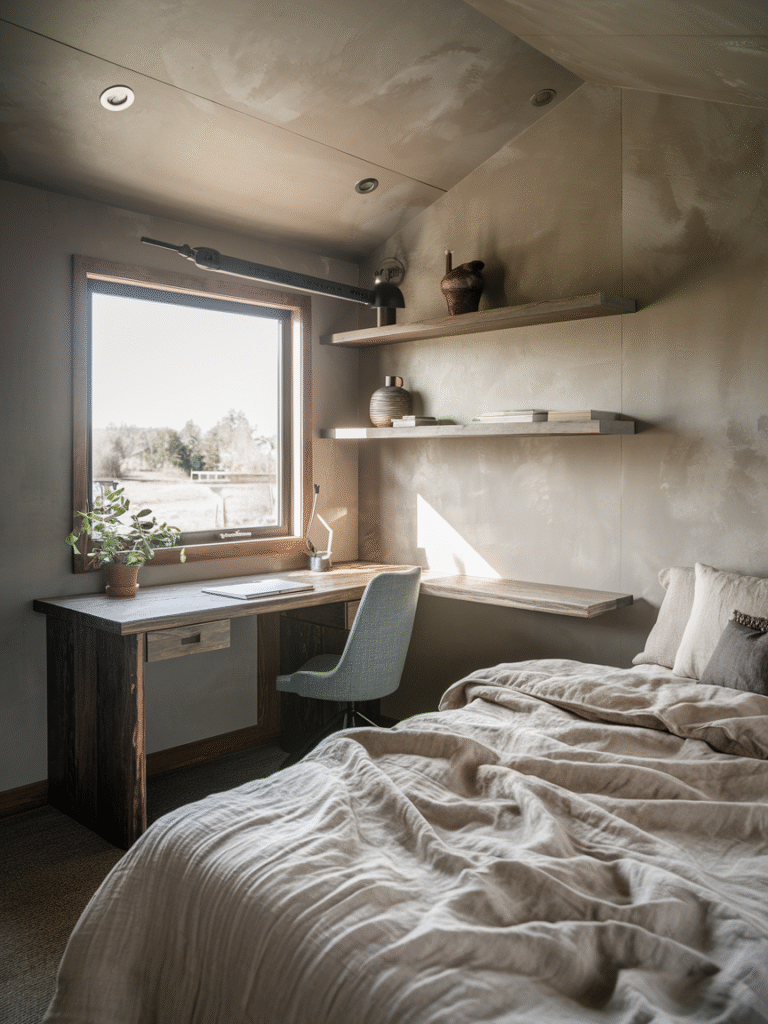
If you’re still reading, I want you to know something: You don’t need to renovate your home to embrace Wabi Sabi. You need only pause long enough to notice the beauty that’s already there. The chipped mug on the windowsill, the lopsided stack of books, the way your cat sleeps in that one sunspot—all of it is part of your living, breathing, imperfect masterpiece.
Wabi Sabi reminds us that our homes—like ourselves—are always a little unfinished. And that’s not just okay. That’s beautiful.
